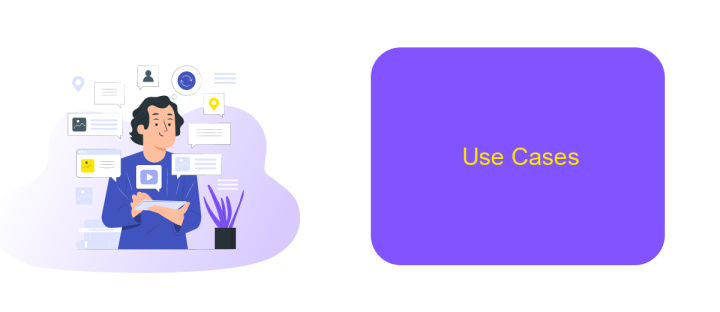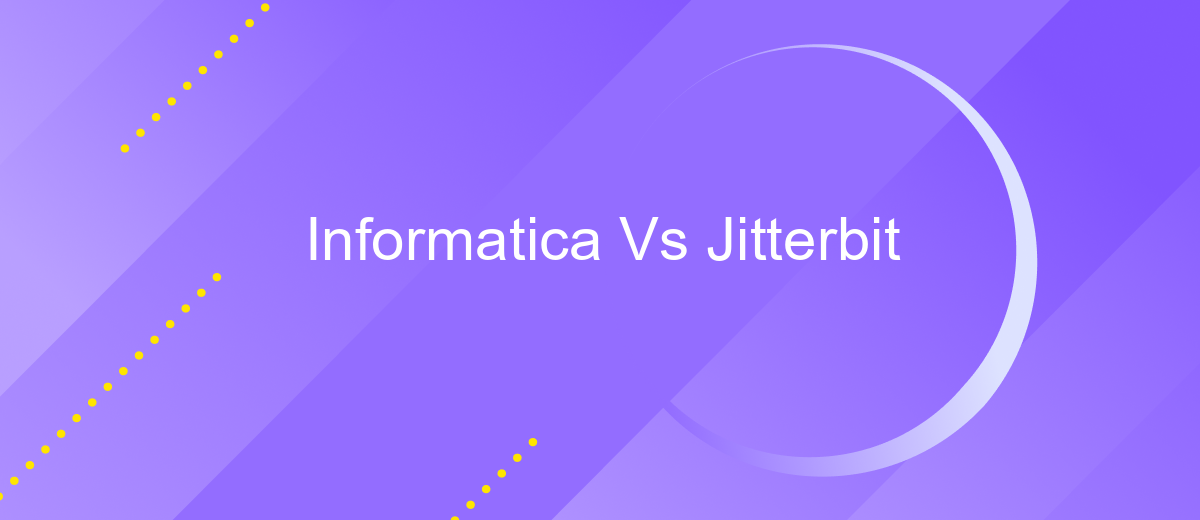Informatica Vs Jitterbit
When it comes to data integration and management, choosing the right platform is crucial for business success. Informatica and Jitterbit are two leading solutions in this field, each offering unique features and capabilities. This article aims to compare these two platforms, highlighting their strengths and weaknesses, to help you make an informed decision for your organization's data needs.
Introduction
In the ever-evolving landscape of data integration, choosing the right tool can make a significant difference in efficiency and effectiveness. Informatica and Jitterbit are two prominent players in this domain, each offering unique features and capabilities to meet diverse business needs. This article aims to provide an in-depth comparison between Informatica and Jitterbit, helping you make an informed decision.
- Informatica: Known for its robust data management and integration solutions, Informatica offers extensive ETL (Extract, Transform, Load) capabilities.
- Jitterbit: Renowned for its user-friendly interface and rapid deployment, Jitterbit excels in API integration and real-time data synchronization.
- ApiX-Drive: A versatile service that simplifies the integration process, making it easier to connect various applications and automate workflows without extensive coding.
Both Informatica and Jitterbit have their strengths and potential drawbacks, making it crucial to evaluate your specific requirements before selecting a solution. Whether you prioritize comprehensive data management or seamless API integrations, this comparison will guide you through the essential aspects to consider. Additionally, services like ApiX-Drive can further enhance your integration strategy by providing a streamlined approach to connecting disparate systems.
Key Features

Informatica and Jitterbit both offer robust data integration solutions, each with their own unique features. Informatica provides extensive data management capabilities, including data quality, data masking, and master data management. Its advanced AI-driven automation and comprehensive cloud support make it a powerful tool for complex enterprise environments. Informatica's ability to handle large volumes of data with high performance and reliability is one of its standout features.
Jitterbit, on the other hand, excels in ease of use and rapid deployment. It offers intuitive design tools and pre-built templates that simplify the integration process. Jitterbit's API integration capabilities are particularly noteworthy, allowing seamless connections between various applications and services. For businesses looking for an efficient way to set up integrations, services like ApiX-Drive can complement Jitterbit by providing additional automation and integration options, further streamlining data workflows and enhancing productivity.
Pricing

When it comes to pricing, both Informatica and Jitterbit offer flexible plans tailored to meet various business needs. Informatica typically provides a more comprehensive pricing model that caters to large enterprises, while Jitterbit offers competitive pricing for small to medium-sized businesses. Each platform has its unique cost structure based on factors such as the number of users, data volume, and specific features required.
- Informatica: Pricing is often customized and requires direct consultation with their sales team. They offer tiered plans based on the scope and scale of the deployment.
- Jitterbit: Offers a more transparent pricing model with clear tiers. Their plans start at a lower entry point, making it accessible for smaller businesses.
Additionally, services like ApiX-Drive can be utilized to streamline the integration process, offering a cost-effective solution for connecting various applications without extensive technical knowledge. This can further optimize your investment in either Informatica or Jitterbit by simplifying the integration setup and maintenance.
Use Cases

When deciding between Informatica and Jitterbit, understanding their use cases can help determine which tool aligns best with your business needs. Both platforms excel in different areas, making them suitable for various scenarios.
Informatica is a robust solution for large enterprises needing extensive data integration and management capabilities. Its advanced features make it ideal for complex data transformation processes and ensuring data quality across multiple systems. On the other hand, Jitterbit is known for its user-friendly interface and rapid deployment, making it a great choice for businesses looking to quickly integrate cloud applications and streamline workflows.
- Informatica: Suitable for large-scale data warehousing and ETL processes.
- Jitterbit: Best for quick cloud application integrations and API management.
- ApiX-Drive: Ideal for automating routine integrations with minimal technical expertise.
Choosing between Informatica and Jitterbit ultimately depends on your specific requirements. For complex, large-scale data operations, Informatica is often the preferred choice. However, for businesses seeking agility and ease of use, Jitterbit or ApiX-Drive could be more suitable, especially for automating routine tasks and integrating various cloud services efficiently.
Conclusion
In conclusion, both Informatica and Jitterbit offer robust solutions for data integration, each with its unique strengths. Informatica stands out with its comprehensive suite of tools and scalability, making it ideal for large enterprises with complex integration needs. On the other hand, Jitterbit excels in user-friendliness and rapid deployment, which can be particularly advantageous for smaller businesses or teams looking to implement integrations quickly.
Choosing between Informatica and Jitterbit ultimately depends on your organization's specific requirements and resources. For those seeking a more straightforward, no-code solution, services like ApiX-Drive can also be considered as they simplify the integration process further. By evaluating your needs and the capabilities of each platform, you can make an informed decision that best supports your data integration goals.


FAQ
What are the main differences between Informatica and Jitterbit?
Which tool is better for real-time data integration?
Can both Informatica and Jitterbit be used for cloud integrations?
How do Informatica and Jitterbit handle data security?
What are the options for automating and setting up integrations with these tools?
Apix-Drive is a universal tool that will quickly streamline any workflow, freeing you from routine and possible financial losses. Try ApiX-Drive in action and see how useful it is for you personally. In the meantime, when you are setting up connections between systems, think about where you are investing your free time, because now you will have much more of it.

